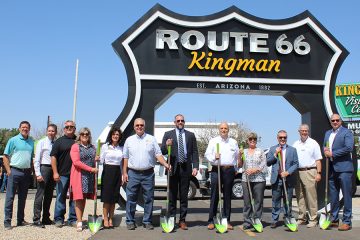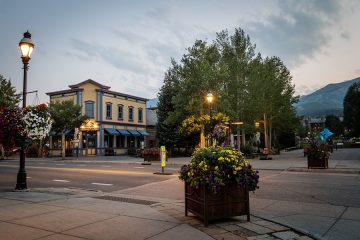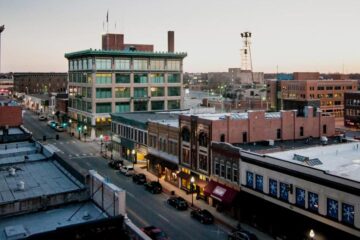- Residential
- Lifestyle Packages
-
-
Connected Family
Home Office
-
Outdoor Lifestyle
Fundamentals
-
-
-
Gaming Necessities
CTA
Or build your custom package
Build Your Package
-
-
- Locations
- Arizona
- Colorado
- Missouri
- Nebraska
-
- Live in an Apartment?
- ALLO for Property Managers
- Products
- Explore Fiber
- Lifestyle Packages
- Business
-
- Help
-
-
Streaming Class callout
Come to an ALLO Streaming Class!
We're offering free classes across many of our communities to help you learn what streaming is, how to get started, what equipment you need, and how to find the right streaming services for you.
Learn MoreExplore Fiber link
-
- About
-
-
Featured job
ALLO has an immediate opening for:
Residential Outbound Sales and First Impression Specialist
Greeley, CO
This engaging and dynamic job requires excellent communication skills and a passion for sales and in-person customer support. Your primary objective as a Residential Outbound Sales and First Impression Specialist is to assist customers coming into the storefront, which will require a deep understanding of our plans and processes to assist new and existing customers.
Apply Today
-
What to Expect During Construction.
We want you to be informed every step of the way. As our teams construct the fiber network in your neighborhood we'll be reaching out by mail, email, door hangers, and lawn darts to keep you in the loop. The website map for your area will always show the most up-to-date information on progress in your neighborhood. If you have any concerns during the construction process please use the contact form below to get in touch.
Construction Steps
- 1 Design
- 2 Construction
- 3 Splice/Test
- 4 Ready for Install
Before you even hear about ALLO in your neighborhood, we are working to design the fiber cable paths throughout your community.
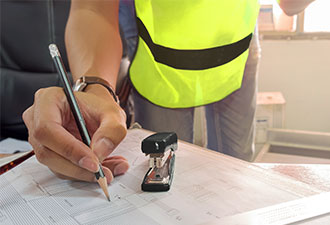
Engineers decide the most efficient way to bring fiber optics to the greatest amount of people in your area.
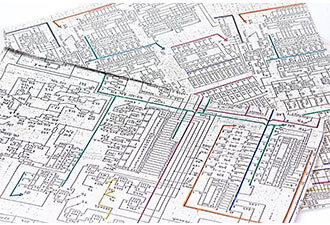
Contractors, city officials, and ALLO collaborate on the fiber path design and submit to the city for approval.
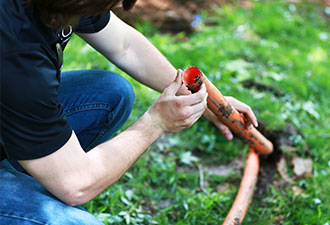
Once approved, ALLO partners with local contractors to begin the construction process.
In an effort to provide advanced notification of construction, ALLO will utilize various communication avenues such as social media, yard signs, ALLO website updates, neighborhood association meetings, email communication, direct mail communication, and a notice placed directly on your front door.
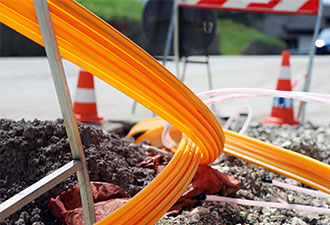
The main fiber pathways are constructed to the distribution points located throughout the city.
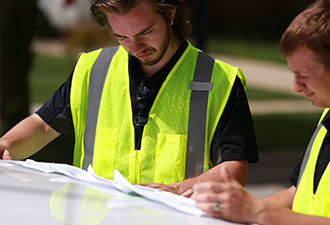
Contractors and utility employees arrive in your neighborhood to mark the locations of existing lines in preparation for local construction.
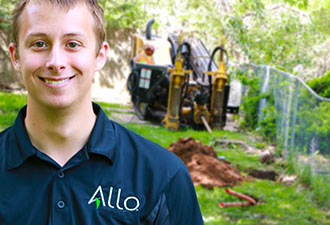
We construct the fiber path from the distribution points directly to utility easements in your neighborhood.
Our splicing team accesses each splice vault and pedestal throughout the city to fuse the individual fibers that will eventually connect to your home or business. Then we test the speed of light as it passes through the fiber to make sure your connection is GIG-fast.
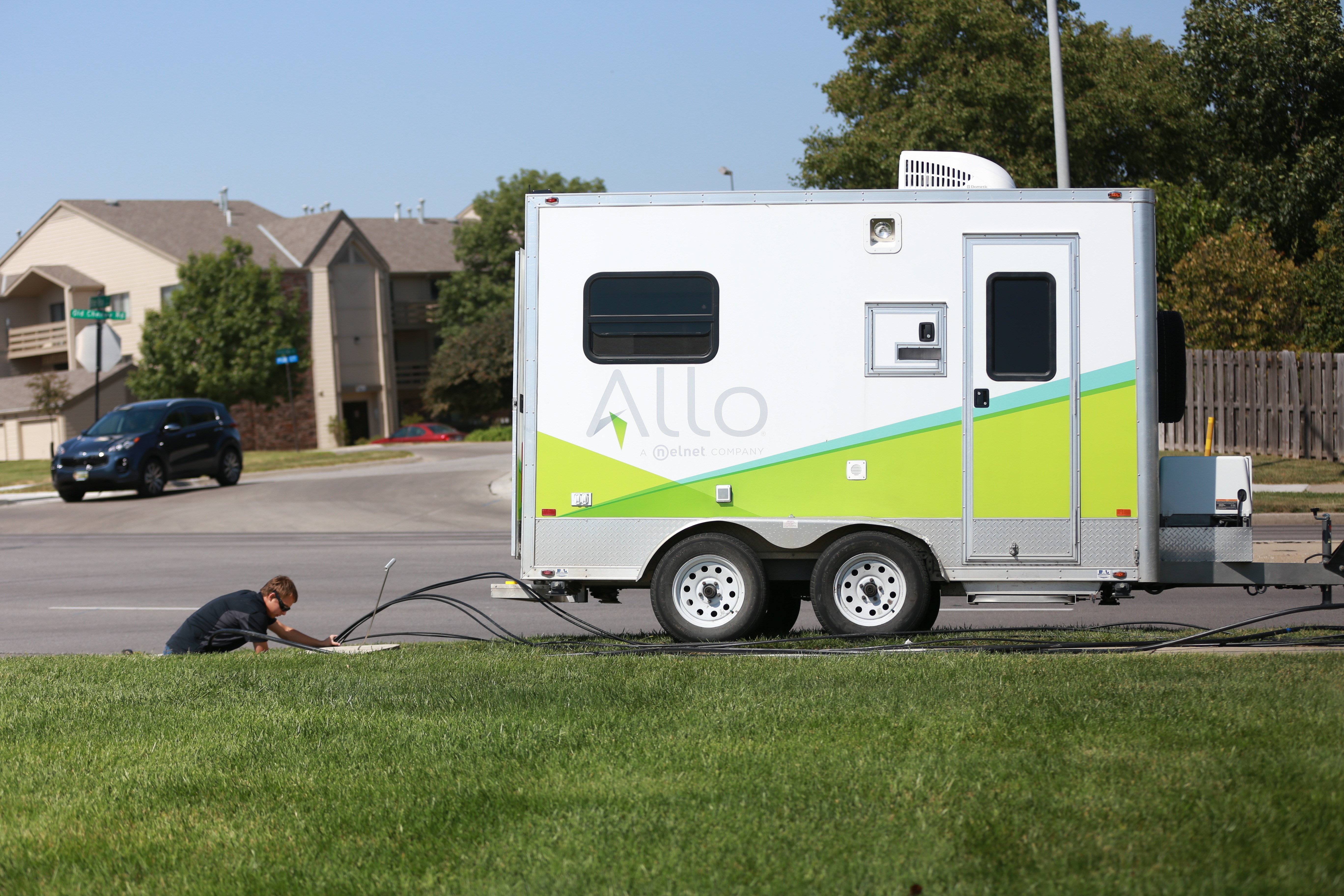
The ALLO team parks a splice trailer near the splice vault in your neighborhood to separate the individual fibers that will eventually connect directly to your home or business.
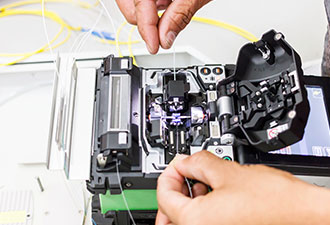
The fiber is tested to ensure a clean, continuous path for the light to travel down.
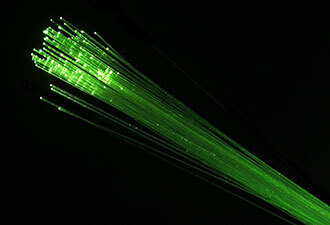
When splicing and testing are complete, the cables are sealed in an air-tight splice case and coiled back into the splice vault, ready to be accessed for individual installations.
Two to four days prior to installation, technicians arrive to connect the fiber to the side of your home or business.
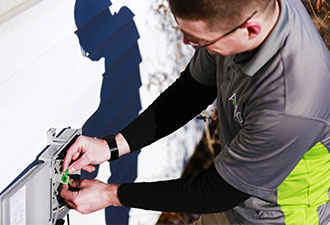
Two days prior to installation, technicians arrive to connect the fiber to the side of your home or business.

Your ALLO technician brings a direct fiber connection into your home or business and connects it to our (included) Blast Wi-Fi router.
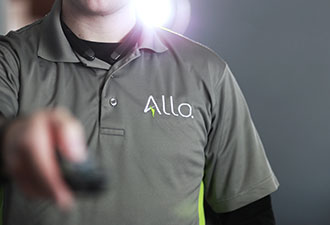
We test your wireless range, walk you through our TV quick guide, help you set up additional devices, test your phone line, and ensure you’re ready to fully enjoy the fiber future with ALLO.
Check to see where your address is at in ALLO’s construction process.
Select Your LocationFAQs
There are flags and people in my yard, what are they doing?
The flags or markings in your area were placed by the local utility companies in order to help our team identify where the underground lines are placed. When ALLO begins fiber construction, we use these markings to protect against damage to your property or utilities. Please see the list below for an explanation of utility color associations.
- White: proposed excavation.
- Pink: temporary survey markings.
- Red: electric power lines, cable, conduit, and lighting cables
- Yellow: gas, oil, steam, petroleum, or gaseous materials
- Orange: communication, alarm or signal lines, cables or conduit
- Blue: potable water
- Purple: reclaimed water, irrigation and slurry lines
- Green: sewer and drain lines
How deep will you have to dig to bury the fiber line?
The main line in the easements and right of ways are buried between two and four feet deep and the fiber drop to the house or to the pedestal may vary between 8 to 12 inches in depth.
There is a hole in my yard with a fence around it – what is that?
We are placing pedestals in the easement in your yard. The pedestal, with weather permitting, is installed shortly after the ground is prepared so there is a fence placed around the hole for safety. The pedestal that is eventually placed here houses the equipment to provide service to several homes and businesses in your area. Our intent is to leave your property the way we found it.
What is an “easement” or “right-of-way”?
The city owns small but specific portions of your property to access and maintain city utilities. We work with the city to access these areas as we build our fiber network.
A utility easement allows a utility the right to use and access a specific area of your property for constructing, operating and maintaining gas, electric, water, and sewer lines. The easement is often a permanent restriction on the property so that it transfers ownership with the home or property when sold. Having an easement gives the utility the right to use the land, but the utility does not own it.
A “right-of-way” is the surface and space above and below any real property in the city in which the city has an interest as an owner or trustee for the public for public travel including public streets, highways, avenues, roads, alleys, easements, sidewalks, tunnels, viaducts, or bridges.
Check out this blog post to learn more about easements.
Why is there a pedestal in my yard and not my neighbor's yard?
During the design phase, the engineering team determines the most efficient way to provide service. They select the least intrusive intersecting rear property point as the general location for a pedestal which is often in the center of four property corners. From that point, the pedestal location is thoughtfully identified based on the following factors:
- Existing underground utilities.
- Location of the underground conduit that will feed the pedestal.
- Proximity to other pedestals.
- Landscape features and/or obstructions.
- Ease of accessibility for crews to construct and maintain the network.
What’s the status of ALLO Fiber progress in my neighborhood?
Up-to-date information on fiber progress in your neighborhood is located on your specific area page.
How many times will ALLO access my yard?
It’s common for you to see ALLO four to five times while we construct and install fiber in your neighborhood.
Construction Concerns
Please complete this form to communicate construction concerns with our team. If you have questions regarding fiber progress in your neighborhood, head to your area page for up-to-date information. Non-emergency requests are handled within four business days.
ALLO is currently constructing a fiber network for Google Fiber in Bellevue, NE. For construction or service-related questions in Bellevue, NE, please call 877-454-6959 or visit https://google.com/fiber/yard. All other ALLO construction concerns can be submitted on the form below.
Please call us for situations requiring immediate attention:
Residential: 866.481.2556
Business: 855.632.3154








